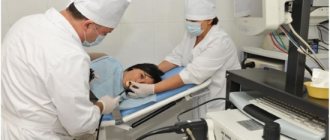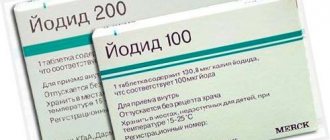The tendency to monitor one’s own health in recent decades is not just a fashion statement, but rather a necessity caused by the growth of chronic non-communicable diseases and cancer. Among the mandatory preventive studies recommended by WHO are annual chest fluorography, examination by a gynecologist for women twice a year, and ultrasound of the abdominal cavity and mammary glands annually. In the West, the culture of regular examinations is widespread, while in the post-Soviet space, most citizens believe that a traditional medical examination is enough to identify serious diseases at an early stage.
The importance of regular visits to a mammologist is that diseases of the mammary gland, including at the inception stage, are easily detected during ultrasound examination. And their timely detection is the key to successful treatment and prevention of malignancy. About who should immediately go for an examination, what day to choose for this, how safe such a procedure is, how it works, what it will show, and answers to other questions are in the proposed material.
Advantages of the method
Breast ultrasound in women has many advantages over other research methods. Firstly, the procedure does not involve exposure to harmful radiation exposure, but is carried out using high-frequency ultrasonic vibrations that cause absolutely no effect on the body. Secondly, unlike X-rays, images of the mammary glands can be obtained in real time, and not just in the form of pictures.
This allows surgical intervention to be carried out under direct ultrasound control, for example, when taking a tissue sample (biopsy) for analysis. These advantages of the technique provide not only excellent visualization of the smallest neoplasms in the mammary glands, but also determination of the quality of the tumor, its structural features and boundaries. Often, breast ultrasound is used to clarify mammographic results.
How to prepare for the procedure
Not every patient knows how to prepare for an ultrasound. It is important to take into account the day of the menstrual calendar at the time of diagnosis. The ideal time is the first ten days of the cycle. Following any diet before the procedure is not required, although it is better to take tests (blood, urine) on an empty stomach. A couple of days before the ultrasound, it is better not to overheat or overcool your breasts. There should be no colds at the time of testing.
If, shortly before visiting the mammologist, the patient underwent chemotherapy, physiotherapy, X-rays of the lungs or abdominal cavity, it is worth informing the specialist about this. It is also better to postpone going to beauty salons. These events can complicate the study, as they provoke changes in the ducts. Immediately before the examination, it is necessary to perform a hygienic toilet of the mammary glands and armpit area.
This procedure itself is absolutely painless, since the assessment of the studied indicators is carried out without the use of injections and medications. Discomfort may occur if the patient has inflammation or other pathology. Upon completion of the procedure, the specialist issues a conclusion with the result, which will be interpreted by a mammologist.
Indications for examination
Every girl and woman should check the health of the mammary glands with some regularity. Thus, females under the age of 30 must undergo an annual ultrasound examination. And after 30, mammography is necessarily added to ultrasound of the mammary glands - the study of the mammary glands using X-rays.
If you experience symptoms such as:
- soreness of the mammary glands;
- roughening of the nipples and the skin around them;
- discharge of fluid from the nipples;
- changes in the color and condition of the skin;
- the appearance of compactions in the glands;
- enlarged lymph nodes in the chest area;
- changes in the size, contours and shape of the breast,
then you should definitely make an appointment with a mammologist for examination, consultation and obtaining a referral for ultrasound diagnostics. It is possible that during the medical examination it will also be recommended to visit an oncologist to exclude or confirm suspicions of the formation of neoplasms.
Self-examination is an integral part of preventing breast cancer in women.
In addition to detecting pathological manifestations, ultrasound is used in planning pregnancy, monitoring processes in the glands during pregnancy and lactation. The harmlessness of the method allows it to be carried out while breastfeeding. Ultrasound of the mammary glands during breastfeeding often helps to quickly and effectively identify the emerging pathology. The procedure is carried out to assess the condition after an injury or inflammation in the chest area, check after surgery, and install breast implants.
Ultrasound is regularly prescribed during hormonal therapy to monitor possible changes in the glands. Regular examination is important for people with negative heredity in the form of breast cancer. Sometimes, in case of hormonal disorders, it is recommended to perform an ultrasound in childhood, since these may be the initial manifestations of not only pathologically early puberty, but also the oncological process. In men, the mammary glands are also examined with ultrasound in case of hormonal abnormalities or traumatic and inflammatory processes in this area.
According to world statistics, breast cancer most often develops after 50 years of age, so before this age it is recommended to carry out the procedure at least once a year, while after 50 - at least 2 times. In men, pathologies of the mammary glands are much less common, so ultrasound is recommended for them no more than once every 3–5 years.
How the procedure is performed and what the ultrasound doctor looks at
The examination is carried out both with the patient sitting, with his arms thrown back, and classically - lying on his back with his arms thrown back or with his arm abducted.
For the convenience of describing the identified pathology, we divide the gland into 4 quadrants - the upper outer and inner, the lower outer and inner. And into 12 sectors according to the principle of a clock dial, that is, each quadrant is divided into three more sectors.
Before performing an ultrasound, the doctor examines the breast, lubricates the sensor with gel and consistently examines the breast tissue
The breast is examined from the base to the nipple, moving the sensor fan-shaped along the quadrants of the mammary gland in steps of no more than 1 cm. Its condition is initially assessed using standard ultrasound diagnostic criteria.
The skin, subcutaneous tissue, and milk ducts are examined. The echogenicity (the ability of tissue to reflect ultrasound) and the echostructure of glandular tissue are assessed. The presence of space-occupying formations and the condition of the retromammary space are determined.
The areola area is studied using the same technique. Excretory ducts are identified behind the nipple (no wider than 0.20-0.22 cm). But they are not visible on middle-class devices. Next, a layer-by-layer study of the soft tissues of the gland is carried out. First, the skin is examined; subcutaneous fat is visible behind it.
The central parts of the chest are made up of a glandular triangle, presented on the echogram as a heterogeneous cellular array. It is not possible to distinguish between individual lobes and lobules during ultrasound.
Behind the glandular tissue there is a retromammary space filled with adipose tissue, behind which there are muscles, represented on the echogram as layered structures and ribs that give acoustic shadows.
https://youtu.be/UlvWifFKnRM
If necessary, an additional diagnostic procedure is performed - ultrasound of the mammary glands with Color Doppler - color Doppler mapping of breast tissue to assess the vascular pattern. The sensor is moved very slowly to avoid color interference.
The normal vascular pattern of organ tissue is represented by single sections of blood vessels, which are evenly distributed across quadrants. The ultrasound picture of a healthy, unchanged mammary gland is mottled due to its heterogeneous structure.
The ultrasound examination ends with an examination of regional lymph nodes - axillary, supra- and subclavian, parasternal (near the sternum) and intrathoracic.
Depending on the age of the woman, the mass of the mammary gland and the phase of the menstrual cycle, the ratio of glandular, adipose and connective tissues that form the organ changes, and accordingly, the echogram changes.
The procedure takes no more than 20 minutes and after it a conclusion is given, with which the patient goes to the doctor for further treatment or additional examination.
If there is a suspicion of a malignant tumor, or it is necessary to differentiate a benign tumor from cancer, a modern method is prescribed that will help with this - ultrasound with elastography.
What diseases can be detected by ultrasound of the mammary glands?
During the procedure, almost all pathologies of the mammary glands can be identified with a high probability. Diagnostics has long become indispensable in medical practice, because ultrasound of the mammary glands shows:
What is more accurate - ultrasound or mammography?
- inflammatory processes (mastitis, abscess);
- benign neoplasms (mastopathy, adenomas, fibromas, lipomas);
- malignant tumors of various tissue origins.
To evaluate the characteristics of compactions, elastography is used - an ultrasound technique that makes it possible to determine the elasticity of the tissues of the mammary glands, lymph nodes and other soft tissue structures. The procedure is called “virtual palpation”, that is, it allows the doctor to “feel” the organs using a sensor. In most cases, elastography can replace a biopsy, being in no way inferior to it in diagnostic aspects, but saving the patient from damage to the integrity of the skin and organ area.
Thanks to the latest technologies, it is possible to protect a woman from complications and pain during a biopsy.
An image of the breast created using elastography
https://youtu.be/Smly4riMeSs
Selecting a cycle day for the procedure
Depending on what problem worries the woman, doctors recommend choosing the day of the cycle. There are two types of cases when you can schedule an examination and prepare for it, and when you need to visit a doctor right away.
So, if a woman is bothered by the following symptoms, then an ultrasound should be performed strictly from 4 to 14 days from the start of menstruation if:
- Lymph nodes were found in the axillary areas, and they were noticeably enlarged in size.
- A woman feels discomfort in her chest.
- At some point, the mammary glands became asymmetrical, that is, they differ in size or shape from each other.
- A small lump was discovered in one of the mammary glands.
- During menstruation, the mammary glands swell greatly, and the stomach hurts.
- The skin on my chest began to peel off.
- Discharge from the nipple has begun, especially when a woman has not breastfed for a long time.
- The nipples have retracted into the breasts or changed shape.
- When you raise your arms up, small dimples appear on your chest.
In order for the result to be as accurate as possible, it is recommended to choose these days, since the symptoms described above are very serious and require a thorough examination.
Useful video about breast ultrasound:
https://youtu.be/oTfV2tHOb1M
But there are cases when doctors advise not to delay contacting a doctor and not to wait for a certain day of the cycle:
- Painful sensations in the chest, especially those that are difficult to tolerate.
- The appearance of swelling in the mammary gland, which is painful to the touch.
- If a lump appears and the skin above it turns red.
- If a woman has a significant increase in body temperature.
- If the discharge from the nipples has become purulent.
- If your health has sharply deteriorated, your appetite has disappeared, constant fatigue, weakness, etc. have appeared.
All of the above symptoms are very dangerous, and therefore it is strictly forbidden to guess the days and delay the appointment, as this may aggravate the situation.
This is interesting: Diagnostics and norm of reticulocytes in the blood
Read: Causes of lactostasis and methods of treating pathology
How to choose the optimal time to undergo diagnostics?
Breast ultrasound does not require any specific preparation; the only thing a woman planning to undergo an examination should know is on what day of the menstrual cycle she needs to visit the diagnostic room. As a rule, the optimal time for the procedure is days 5–12 of the menstrual cycle. It is during this period that the hormonal background is most even, the mammary glands are not swollen, and are more effectively visualized by ultrasound. Later, after a few days, the body will gradually prepare for a possible pregnancy and the female breast will be less suitable for examination.
In a situation where a woman is taking hormonal contraceptives or has already reached menopause, it does not matter on what day the procedure will be performed. In these conditions, the hormonal background is quite stable, and nothing can interfere with the successful collection of diagnostic information. There is also no need to choose a specific day during pregnancy, during the lactation period and with an irregular menstrual cycle. If the breast suddenly becomes painful, redness appears and the temperature rises, then the procedure should be completed immediately.
On what day of the cycle is a breast ultrasound scheduled?
The difference between the female body and the male body is that the internal processes in girls occur taking into account the menstrual cycle.
During the period before and immediately after ovulation, serious hormonal surges occur in a woman’s body.
Hormones such as estrogen, luteinizing hormone and progesterone become more active closer to ovulation and influence the test result. To avoid distortion of the real picture of the state of the internal structures of the mammary glands, the ultrasound procedure is performed immediately after menstruation. On average, the period of relative calm is the 5th–10th day of the cycle. To recommend a specific day, you need to take into account the duration of the cycle and regularity. So if the loop:
- Short, lasts less than 28 days, then an ultrasound is done on the 5th day after menstruation;
- Average and regular for 28 days, then on the 7th day;
- Long, from 28 to 35 days, then wait 10 days and come to the session.
If a woman has already reached menopause, she can undergo an ultrasound examination of the mammary glands on any day, even on the day of treatment. This is true even if you experience occasional, irregular bleeding during menopause.
During pregnancy and lactation, a woman is prescribed a diagnosis only as a last resort, for example, when a malignant tumor is suspected. In other cases, it makes sense to wait until the end of breastfeeding, then, after the cycle has normalized, undergo an examination. This recommendation is associated with hormonal changes in the body of a pregnant woman.
Principle of the survey
The procedure itself is very simple, because they perform an ultrasound of the mammary glands by moving the emitter over the surface of the skin, allowing the sensor to record the reflected ultrasound waves and transmit them to the monitor screen. Modern devices create not only a two-dimensional image, but also a three-dimensional one, as a result of which you can view both a photo of the organ being examined and a video in real time. The duration of the study usually does not last more than 20–30 minutes.
The patient sits comfortably on the couch, having first removed all outer clothing. The ultrasound doctor applies a special water-based gel to the emitter so that the patient does not experience any discomfort when moving the sensor. The gel allows the emitter to glide smoothly and ensures tight contact with the skin. The patient places her hands above her head to allow the doctor to examine the mammary glands and adjacent areas - the armpits, nearby muscles and others.
The emitter slowly moves across the skin, recording the wave reflection of tissue structures, and displays information processed by a computer program on the screen. At the end of the procedure, the patient can be free - there are no restrictions for subsequent activities, since ultrasound does not have any effect on the physical or psycho-emotional state of the subject. If the decoding of the results obtained is promised in a short time, then the woman can wait a little and take them right away.
The principle of ultrasound examination of the female breast
In some situations, the procedure may need to be repeated. This may be necessary to clarify controversial issues or to track the dynamics of prescribed therapy. Don’t worry, wondering how often you can do an ultrasound of the mammary glands - this is unnecessary. The harmlessness of the method allows you to do it at least several times a day.
How is the breast ultrasound procedure performed?
The woman should completely free her upper body from clothing and lie with her back on the couch. Your arms should be raised and placed above your head. If the breasts are large, the woman will be asked to stand or turn to her side.
The specialist covers the quadrants of the breast with gel. To consistently study the entire area, the glands are visually divided into 4 quadrants and the axillary porch, Spence's tail, and passed through with a sensor. The transducer is pressed tightly against the skin to prevent air from getting between the sensor and the body. The doctor carefully examines each breast and, if indicated, starts with the healthy one. At the same time, attention is paid to every centimeter, but the statistics of the location of cancer tumors are taken into account.
| Quadrant | Upper | Lower |
| External | 45% | 10% |
| Interior | 15% | 5% |
The patient's lymph nodes in the area of the collarbone, armpit and anterior part of the chest are also examined.
At the end of the diagnosis, the woman expects a conclusion to be prepared, which will be deciphered by the attending physician. In conclusion, they assess the condition of the pectoral muscles, milk ducts, the presence or absence of structural changes, pathologies, and so on.
If a breast ultrasound reveals the presence of malignant tumors, the patient is sent for examination of the pelvic organs, lymph nodes in the groin, retroperitoneal nodes, liver, and thyroid gland. The root cause of the disease is often located in them.
What is more informative: mammography or breast ultrasound?
Which study is better and capable of providing the most reliable and complete data on the condition of the breast - mammography or ultrasound of the mammary glands? Such a question is absolutely incorrect. These two methods complement each other. A mammograph makes it possible to assess the condition of soft tissues, and an ultrasound machine allows you to additionally examine adjacent lymph nodes - axillary, subclavian and conduct a dynamic examination.
Ultrasound provides a thorough examination of tissues located close to the chest, for example, it allows you to diagnose the formation of glandular nodes adjacent to this area. Mammography is the optimal diagnostic tool for detecting intraductal pathologies and clarifying the nature of neoplasms. But you cannot do without the use of ultrasound, because ultrasound shows the presence of metastatic foci.
If necessary, the doctor will definitely prescribe both examinations to get the most accurate results. Therefore, you should not doubt whether it is possible to do it or not, put off undergoing one or another method, but read reviews of those who have undergone the procedure, and go mentally prepared for diagnosis.
What does breast ultrasound show?
- functional changes such as FCM (fibrocystic mastopathy)
- tumor formations and their nature - cystic (cyst with fluid), or these are formations, which may include fibroadenomas. small formations that cannot be found upon examination and palpation.
The mammologist speaks about further tactics - what to do, how often to be observed after consultation. If there are changes in the breast, a repeat ultrasound is performed after 6 months or three months, depending on the nature of the changes.
Why is ultrasound performed at a young age and not mammography?
The mammary glands consist of glandular and adipose tissue. During childbearing age, glandular tissue predominates, which is dense, and therefore on x-rays it is often difficult to see formations.
And on an ultrasound, glandular tissue is not a hindrance and you can clearly see whether there are any abnormalities in the breast or not.
Reviews
Marina, 38 years old: My breasts started hurting before every period, I went to see a gynecologist, he sent me to a mammologist to rule out all possible diseases. I received a referral for a mammogram. The doctor told me that I needed to come before the 10-11th day of the cycle, and I immediately had an ultrasound at that time. The procedure was short - 15-20 minutes, and I really liked that at the same time the doctor told me everything about the condition of my glands.
Svetlana, 47 years old: After removal of breast fibroadenoma, I began to undergo ultrasound regularly - at least 1-2 times a year. The procedure does not cause any unpleasant sensations - you just lie down and look at the ceiling or the monitor screen. The duration is short, and in the clinic I visit, the results are given just as quickly, in 20–25 minutes. After which I immediately go to the attending physician for a detailed interpretation and correction of hormonal therapy.
Irina, 43 years old: I had to undergo breast ultrasound 3 times in a row over a year and a half. The mammary gland hurt, and I didn’t wait for everything to go away on its own. The first two times did not show any changes, and I decided to change the clinic. The third time revealed fibroma, and I was scheduled for surgery. From my experience, I can conclude that the professionalism of the doctor plays a very important role, even if the diagnosis is carried out using new equipment.
Possible contraindications to the examination
Breast ultrasound is considered the safest diagnostic method, and therefore has virtually no contraindications. The reasons for the prohibitions include the following:
- Undergoing X-ray examinations 2–3 days before the procedure.
- Passing through an X-ray scanner at airports.
- Active thermal procedures.
- Physiotherapy.
If it is necessary to conduct an urgent ultrasound examination, the doctor must be made aware of previous disorders so that he can take them into account and not make an incorrect diagnosis.
Acceptable execution frequency
Ultrasound examination of the mammary glands has been proven to be absolutely safe.
Moreover, it is mandatory in preparation for pregnancy and motherhood. How often breast ultrasound can be done also depends on the patient’s age and complaints. During adolescence, 1-2 studies are sufficient at the time of formation of the mammary glands. For preventive purposes, women under 30 years of age are recommended to undergo diagnostics every couple of years. The age category of 30-45 years needs an annual examination, and older patients need to monitor the condition of the mammary glands every six months.
What is the essence of the procedure
This event as such does not cause discomfort. Pain may occur in the presence of inflamed areas.
During the examination, the patient is in a supine position with the upper half of the body exposed. A special gel applied to the area being examined will help achieve high-quality interaction between the sensor and the organ. At the same time, according to indications, blood flow is studied. Dopplerography is used to accomplish this task.
The duration of the event is about 20 minutes. Upon completion, the subject receives a conclusion with the indicated results.
Ultrasound with elastography is used to identify the nature of the tumor and analyze the structure of cells and tissue. Its use is optional and prescribed in some cases.
https://youtu.be/rDMKG4uejaQ
Diagnostic results - normal and pathological
The resulting images are usually called an echogram. It will show the exact location and size of the formation if one is detected. The obtained ultrasound results and their interpretation are given to the patient or pasted into his card. This form is called a survey protocol.
The following information is entered into the form:
- description of the structure of the predominant tissues, their density and echogenicity;
- the condition of the lymph nodes and the size of the ducts;
- information about the presence of pathology - location, size and description with photo.
Doctor's report
The doctor’s conclusion always includes an analysis of the factors in their totality:
- ultrasound diagnostic data;
- gender and age of the patient;
- day of the menstrual cycle;
- taking hormonal contraceptives or other hormone-containing drugs;
- patient complaints;
- presence of pathologies in the past.
After analyzing all available information, the doctor makes a diagnosis.
The doctor makes conclusions about normality and pathology based on several factors and taking into account the patient’s age, current condition and hormonal balance.
| Index | Norm | Pathology |
| Glandular structures | The structure is uniform, with a thickness of 14 mm (for young girls), 20 mm for women 35 years old. In women with large breasts, the thickness of the glandular tissues can reach 40 mm. | The structure is uneven, with dark spots (cystic mastopathy), compactions. |
| Mammary ducts | The walls of the ducts are dense and smooth, without deformation or expansion. | The walls of the ducts are deformed, with protrusions or narrowings. |
| Connective tissue | The density of the fabrics is uniform, without dark or light spots. | The connective tissue contains many light areas with blurred contours (fibrinous mastopathy) or one or more rounded neoplasms with clear contours (fibroadenoma). |
Several factors can influence the diagnostic result, including the presence of diseases and the day of the menstrual cycle. Thus, in a healthy woman, an ultrasound of the mammary glands after menstruation in 3% of cases shows the presence of cysts with a diameter of 2-3 mm. If you undergo diagnostics 2 days before menstruation, the indicators will be different - cystic formations will be found in 25-30% of women.
If ultrasound is used to monitor previously diagnosed pathologies (mastopathy, fibroadenoma or breast tumors), the doctor compares the results obtained from the previous examination with the latest ones. In this case, it is also taken into account on what day of the cycle the ultrasound of the mammary glands was done - with mastopathy and fibroadenoma, which have a high risk of malignancy (degeneration into a malignant tumor), it is important to notice in time the growth or change in the structure of the seals.
If a woman has discomfort in the mammary gland, its shape has changed, or she accidentally discovered a lump in the breast, you should not hesitate and wait for the period when it is better to do an ultrasound of the mammary glands. It is important to consult a doctor, describe the symptoms, and undergo preliminary diagnostics (oncological examination, laboratory tests). This will help make an accurate diagnosis during an ultrasound breast examination and maintain the woman’s health.
Of course, a specialist should interpret the results, but every woman is interested in what an ultrasound of the mammary glands shows.
The interpretation of a normal breast ultrasound may differ from patient to patient. The characteristics of the breast structure are influenced by age, tissue density, and hormonal characteristics (for example, lactation).
On ultrasound, the skin appears as a uniform echogenic zone approximately 2 mm thick (slightly thicker in the areola area). In the retromammary and subcutaneous zones, fat lobules are visualized as elliptoid or multifaceted low-echoic structures, penetrated by dotted loci and echogenic lines (these are the milk ducts).
In lactating women, the glandular tissue of the mammary gland is normally somewhat different from non-lactating patients. The mammary zone is moderately echogenic, and inclusions of low echogenic fat are also present. The width of the ducts is approximately 1–2 mm; they should not have expansions, but may narrow towards the periphery of the gland. The milk sinuses expand in the area behind the nipples.
If the diagnosis is carried out in the second phase of the cycle or during pregnancy, some abnormalities may be noticeable. Therefore, you should first consult with your doctor about when it is necessary and possible to do an ultrasound of the mammary glands after menstruation in your case.
Mastopathy is a dishormonal benign disease of the breast, which is characterized by the growth of the gland (pathological proliferative process). Women with this problem experience severe breast tenderness before menstruation and lumps in the gland upon palpation. What mastopathy looks like on ultrasound depends on the form and characteristics of the disease.
Diffuse mastopathy is visualized in the form of many small compactions located throughout the gland relatively evenly. If the cystic component predominates, a large number of small cavities with fluid are noted in the tissues. If diffuse mastopathy has a fibrous component, densification of the connective tissue is noticeable.
Nodular mastopathy (fibroadenoma) usually appears after the diffuse stage. On ultrasound, breast fibroadenoma is visualized as a limited area of compaction.
When to do an ultrasound of the mammary glands for mastopathy? As in other cases, in the first phase of the menstrual cycle.
Most often, mastitis is of a lactation nature and occurs in women while breastfeeding. At the same time, the temperature rises, the skin turns red, tissue swelling and local pain appear. Ultrasound of the mammary gland with lactostasis (milk stagnation) shows the presence of inflammatory edema. There is an increased fluid content in the gland.
Untreated mastitis leads to the formation of an abscess - pus accumulates in the tissues of the gland. On ultrasound, this stage appears as a limited formation with fluid inside. There is inflammatory swelling around the abscess.
We recommend reading the article about
purulent mastitis
. For what reasons can a purulent process occur in the mammary gland, how to prevent the development of infection in time, how mastitis and mammary abscess are treated, you will learn from this article.
What does a cyst look like?
A cyst is a capsule with fluid inside, which is located in the middle of healthy tissue. It is usually formed from an enlarged gland duct against the background of hormonal imbalances in the body. A feeling of fullness and nagging pain appears as the tumor increases in volume, and in the early stages the disease may not manifest itself.
What does a breast cyst look like on an ultrasound? It is visualized as a round formation with liquid inside. Typically, when diagnosing this disease, a biopsy of the contents of the capsule is performed. This is best done under ultrasound guidance.
Breast cancer can be suspected if the gland is deformed, if there is a lump in it, or if the nipple is retracted. What breast cancer looks like on ultrasound depends on the stage and characteristics of the process. It is usually visualized as a compaction without clear boundaries, characterized by infiltrative growth (grows into neighboring areas).
The mammary gland changes immediately after fertilization, which is often the first sign of pregnancy for a woman. The breasts become sensitive, somewhat painful, increase in size, the nipples darken, and veins appear on the skin. Over time, colostrum begins to be released from the glands. Of course, these changes are also noticeable during ultrasound diagnostics.
- Ultrasound of the mammary glands during pregnancy may be required in the following cases:
- discharge from the nipples has a bloody tint;
- the breast is hard, very painful, or has changed color;
- the glands are enlarged unevenly;
- There is a lump or depression in the chest.
The presence of itching is not an alarming symptom. As the gland grows, the skin stretches and discomfort appears. To avoid the formation of stretch marks, a woman should use a special cream.
Breast ultrasound allows you to assess how hormonal changes occur in the body of the expectant mother. It must be prescribed before mammography (if there are indications for this procedure).
If a woman is diagnosed with fibrocystic mastopathy, cysts filled with unripe milk may appear during pregnancy. At the same time, breast ultrasound is a fairly informative diagnostic method and allows you to make an accurate diagnosis. A puncture can be performed using ultrasound control.
Ultrasound of the mammary glands during pregnancy is mandatory for women who have previously been treated for breast cancer. There is a possibility of relapse due to sudden hormonal changes. In this case, pregnancy poses a danger to the patient’s life and the woman is recommended to have an abortion for medical reasons.
How is the examination carried out?
A woman, having come for an ultrasound, enters the office and begins to undress to the waist. Before the procedure, she must remove all jewelry and lie on her back. The doctor then applies a special gel to the breast to contact the sensor, after which he takes the transducer and moves it over the chest. The computer turns sound waves into images on a monitor. The study lasts no more than 20 minutes. If during the examination some anomaly is determined, then the ultrasound will take much more time.
When do you need to urgently go for examination?
If the following complaints arise:
- pain in the chest area;
- temperature increase;
- the appearance of swelling in the chest area, causing pain;
- this swelling is accompanied by redness of the skin;
- purulent discharge from the nipple;
- deterioration of health, accompanied by drowsiness, weakness, nausea and loss of appetite.
You shouldn’t even ask about the timing of the ultrasound, but go for an examination if one of the above symptoms appears.
It is also recommended to calculate the time so that you have the opportunity to get an appointment with a gynecologist or mammologist on the same day. If this is not possible, then preference should be given to visiting a doctor. We found out what day of the breast ultrasound cycle should be done.
Differences between ultrasound and x-ray
It is not possible to choose between these procedures because they are both an important part of breast cancer screening. Due to their differences, radiography and ultrasound allow one to obtain high-quality diagnostic results, since they complement each other.
Only mammography can accurately detect mutations in cells . But due to radiation, it is prescribed only in cases of urgent need and only to patients over 40 years of age.
In this sense, ultrasound diagnostics is more harmless, but it is often unable to diagnose a tumor, since the latter merges with the surrounding tissue in the image.
Patients at risk alternate between these two examinations. X-ray reveals the location of the tumor, but sometimes there are errors in interpretation. Ultrasound diagnostics is indispensable when it is necessary to control the taking of a puncture or biopsy.
https://youtu.be/FGOQEwsh3Mk
What are the indications for the study?
This diagnostic procedure is done for women who have the following complaints:
- change in the shape of the nipple, gland;
- the appearance of discharge from the nipple;
- presence of chest discomfort;
- if asymmetry of the mammary glands appears;
- the appearance of painful menstruation;
- the skin on the chest began to peel off;
- retraction or thickening of the nipple, its swelling or other suspicious change become noticeable.
In addition, to diagnose possible breast diseases, as well as for preventive purposes, the procedure is prescribed for the following indications:
- in the presence of a high risk of oncological pathologies;
- with severe premenstrual syndrome;
- before IVF;
- if there is a suspicion of ovarian pathology;
- if there is a need to select oral contraceptives;
- with neoplasms of the uterus.
https://youtu.be/Pm7jRDQ7oCU
Which doctor should I contact to prescribe an ultrasound, where is the best place to do it and how much does it cost?
The period of the procedure is influenced by the patient’s age, the purpose of the examination, and the use of certain medications. To make an accurate diagnosis, an examination must be done in the first half of the menstrual cycle. When it is best to perform an ultrasound of the mammary glands in each specific case, the attending physician will tell you.
What day of the cycle
A gynecologist or mammologist refers the patient to the procedure from the 5th to the 10th day of the menstrual cycle. It is not advisable to undergo examination a few days before the onset of menstruation. At this time, changes occur in the hormonal background that can significantly affect the diagnostic result.
During menopause or taking hormonal medications, the examination is scheduled on any convenient day.
An inconsistent menstrual cycle makes its own adjustments. If there is a tendency to take a long break - more than 35 days, an ultrasound scan is prescribed on the 10th day after the start of menstruation. When the cycle is 21 days, the examination is done on the first day or the first 5. The exact date in such cases is selected by the gynecologist.
When breastfeeding, an ultrasound is done to identify the cause of milk stagnation and to understand the overall picture of the pathology. An ultrasound examination is also recommended upon the onset of lactation during the prenatal period.
Mastitis often occurs during breastfeeding, which can only be detected using ultrasound.
During menopause, ultrasound is prescribed at least once a year. The procedure can be done in conjunction with a mammogram or separately. If the mammologist has not prescribed a mammography examination, ultrasound is done twice a year.
When frequent monitoring of the condition of the glands is required, for example on different days of the same cycle, there is no need to worry. The procedure will not cause any harm to the body. Ultrasound scanning should be done as often as necessary in a particular situation.
An ultrasound of the mammary glands is prescribed by a mammologist, gynecologist or therapist, but you can contact specialists without a referral. Especially when it comes to a private clinic. In public hospitals, upon referral, the examination will be done free of charge. The cost of breast ultrasound in private clinics varies depending on the city and the characteristics of the examination.
The approximate cost of ultrasound screening in private institutions in Russia is:
- 450-1500 rubles - standard procedure;
- 950-2500 rubles - ultrasound of the mammary glands and lymph nodes;
- 1800-3500 rubles - examination of the mammary glands, lymph nodes and blood vessels using Doppler.
Continuing the conversation about ultrasound of the mammary glands: who should do it and when, let’s dwell on those moments in a woman’s life when it is necessary to undergo an ultrasound, these are:
- If one day you notice that your nipples have changed their shape and color, you need to go for examination. The nipples may be swollen, reddish or indented, and painful to the touch;
- Painful sensations in the chest constantly or appearing during menstruation;
- The color of the skin of the mammary glands has changed or the skin has become dry;
- Enlarged lymph nodes;
- If one breast has become larger than the other and this is visible visually;
- When “dimples” appear on the mammary glands or lumps are felt; The shape of the breast has changed;
- If you have ever had a breast injury or surgery on the mammary glands or a gynecological illness;
- If moisture of unknown origin is released from the chest.
Young mothers should be especially attentive to the health of the mammary glands. Chest pain after childbirth, as well as during feeding, should alert you. Seek examination if you have a fever, a feeling of weakness, or when there is no appetite.
Of course, ultrasound is the simplest type of examination, and most importantly, painless, so the question often arises about how often such studies can be carried out.
This study is absolutely harmless and can be done annually for preventive purposes. However, in the postoperative period, ultrasound is recommended once every 3-4 months.
The breast examination procedure itself is carried out in two positions, based on the anatomical characteristics of the patient. An ultrasound is performed when the woman lies on her back and alternately places her right and left hand behind her head, according to the breast being examined. Specialists traditionally begin the procedure with a healthy breast in order to identify the slightest deviations by comparison.
One by one, square by square of the mammary glands is examined, while women with a large bust may experience some unpleasant sensations from the pressure of the sensor, because the more magnificent the breast, the stronger the pressure to view the entire breast cavity.
There is a second position, when the patient lies on her side on a pillow. By the way, during an ultrasound, a woman may be asked to take different positions to make the examination more effective.
What is it done for?
Breast ultrasound uses the power of ultrasound waves to produce an image. This method should not be confused with radiography, since ultrasound does not use ionizing radiation, as a result of which this examination method is completely harmless and can be performed as many times as necessary. Therefore, ultrasound of the mammary glands can be performed during pregnancy.
In addition, the method differs from x-rays in the ability to obtain a real image at the present time, and not just as a snapshot. Thanks to the examination of the mammary glands, it is possible to evaluate the tissue structure and determine the presence of tumors and cysts in a woman. The doctor may also take a puncture from formations of a suspicious nature in order to carry out a more detailed examination in the future.
This method is used even in cases where it is necessary to clarify the diagnosis obtained using mammography. The mammogram may not show certain pathological changes at all, or they cause difficulties in interpretation, and in case of doubt, additional ultrasound or MRI is required.











